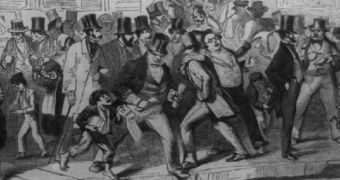A team of experts is currently proposing a new method for shortening the time interval a panic attack usually covers. The way the group takes for doing this is focusing on making patients breathe less.
The scientists say that, in order to counteract the feeling of suffocation that oftentimes accompanies panic attacks, people need to avoid taking in large breaths of air at all costs.
In the new course of treatment, the experts have also included a technique for altering the breath, which they say comes in very handy for those who suffer from frequent panic attacks.
According to the results of a scientific study, it would appear that the method is effective in combating both hyperventilation, and also short-term panic disorder symptoms.
The group behind the investigation says that the method is even more efficient than traditional psychological therapy, LiveScience reports.
One of the most interesting effects of applying this technique to panic attack sufferers is that it might make patients less likely to experience the full strength of the attacks in the first place.
The newly-developed method is called capnometry-assisted respiratory training (CART), explains scientist Alicia Meuret from the Southern Methodist University (SMU) in Dallas, who was also the leader of the study.
“In a certain way, CART was superior because it was changing the psychological symptoms and the abnormal physiological state,” the expert says.
Official statistics from the National Institute of Mental Health (NIMH), a division of the US National Institutes of Health (NIH), show that more than 6 million Americans suffer from reoccurring panic attacks at any given time.
The most common symptoms associated with such an attack include sweaty palms, a feeling of terror, hyperventilation, and pounding heathbeats.
When sufferers experience panic attack, they are most often told to calm down and take a deep breath, but this may turn out to be a bad idea for people who are hyperventilating.
As this process takes place, a larger-than-usual amount of carbon dioxide is expelled from the lungs, and this causes numbness and dizziness. These symptoms are what make people feel like they are suffocating.
The most common occurrence is that sufferers begin to breath even deeper and faster, making things even worse. “It's not because they have a lack of oxygen, it's because they're exhaling too much air,” Meuret explains.
“Take a deep breath' is not a helpful instruction. It's very challenging for patients to learn not to breathe deep, because they're feeling sort of breathless,” she adds.
“Patients really need that feedback of carbon dioxide and, ideally, also of oxygen just to confirm to them that the symptoms are not due to suffocation,” the expert concludes.

 14 DAY TRIAL //
14 DAY TRIAL //